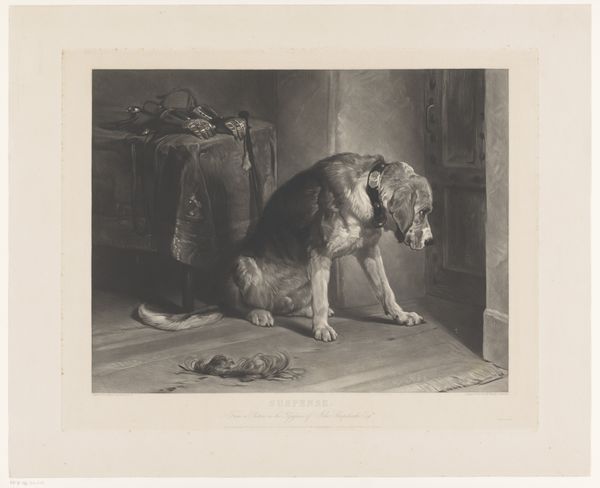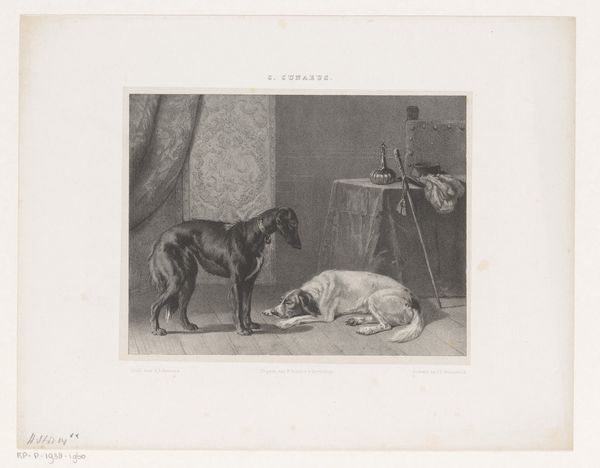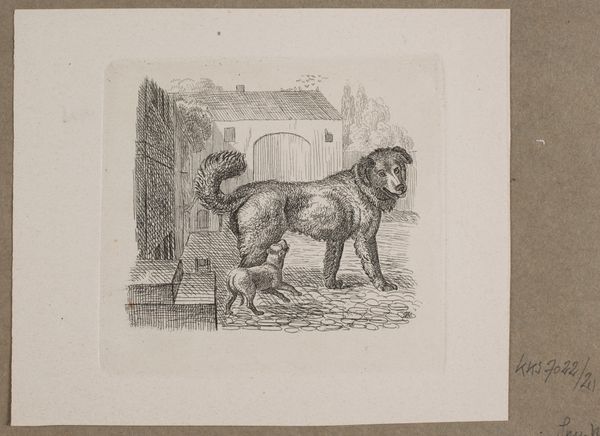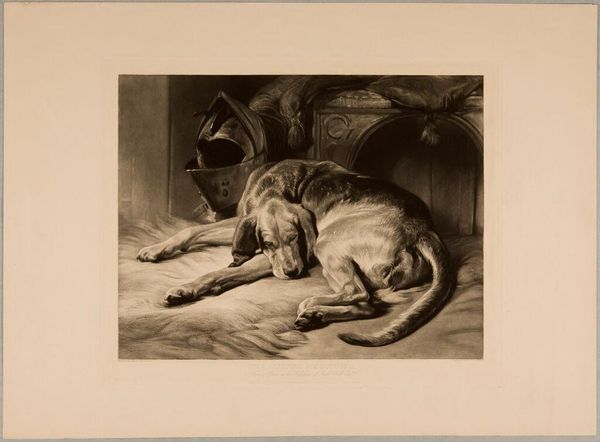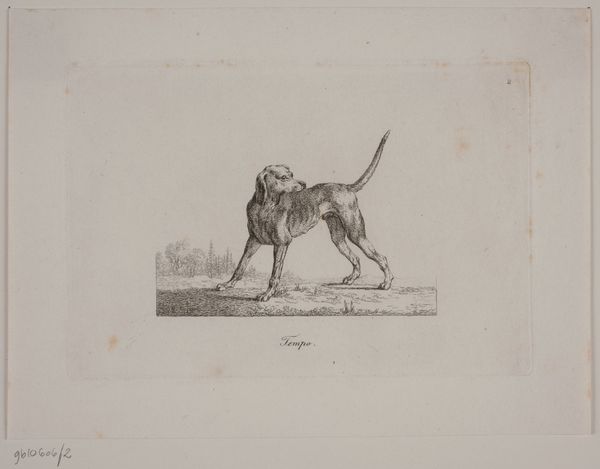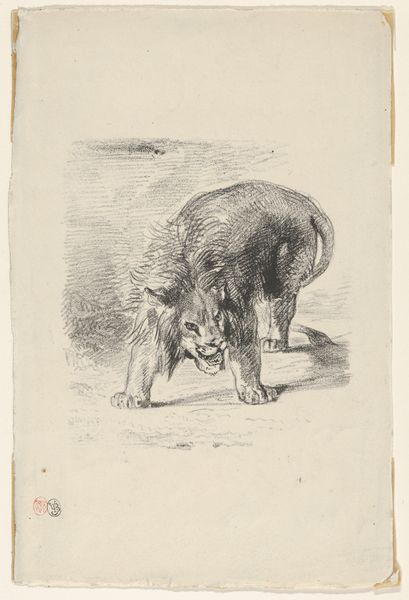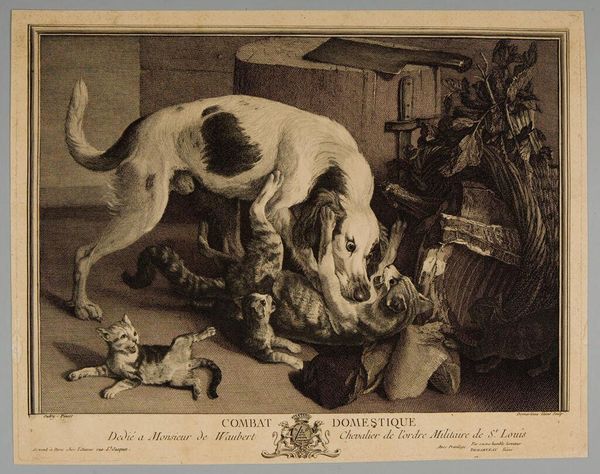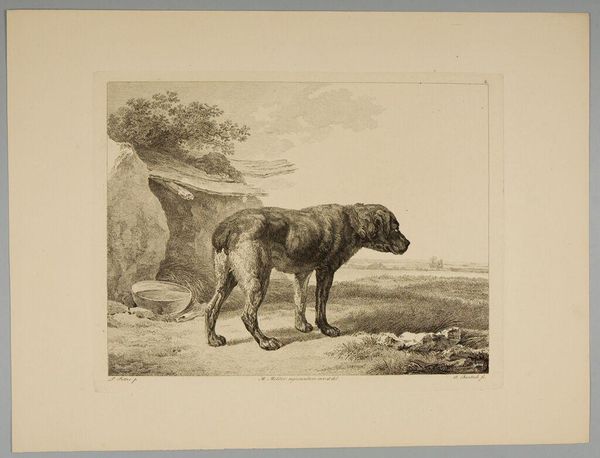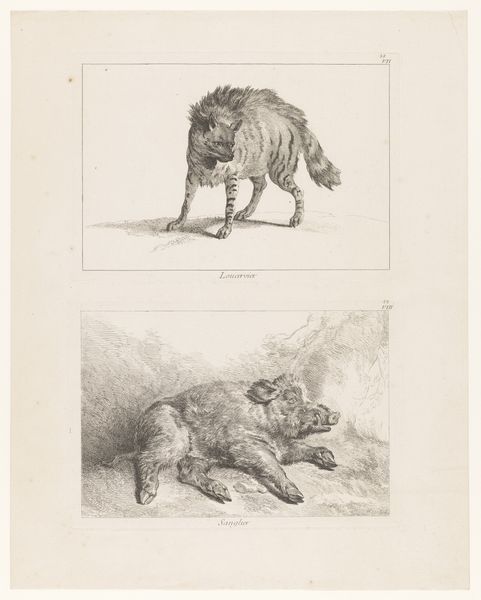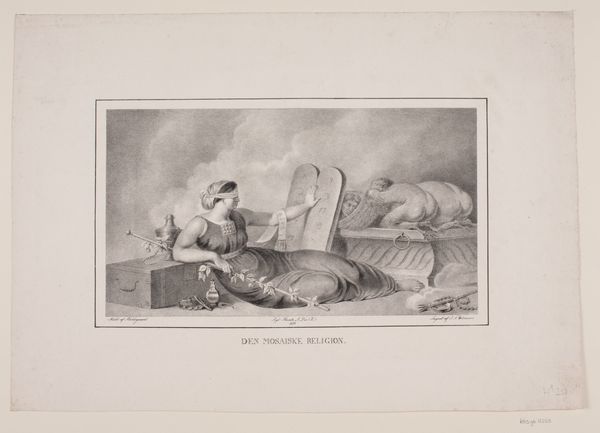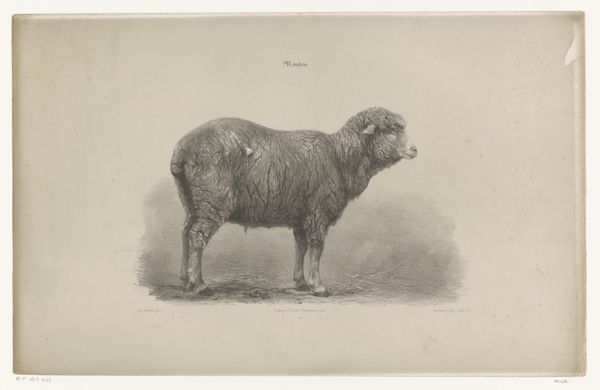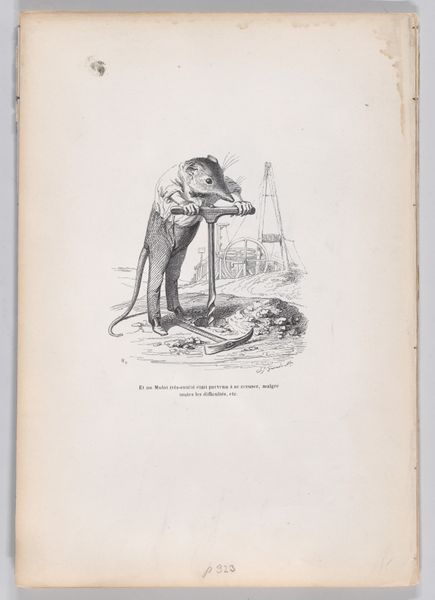
Fotoreproductie van een prent naar een schilderij van Edwin Henry Landseer c. 1860 - 1870
0:00
0:00
anonymous
Rijksmuseum
print, photography, gelatin-silver-print
#
animal
# print
#
dog
#
charcoal art
#
photography
#
coloured pencil
#
gelatin-silver-print
#
genre-painting
#
pencil art
#
watercolor
#
realism
Dimensions: height 124 mm, width 152 mm
Copyright: Rijks Museum: Open Domain
Editor: So, here we have an intriguing photographic reproduction of a print after Edwin Henry Landseer, titled "Suspense," dating from around 1860 to 1870. The focal point, this forlorn dog, seems to exude anxiety. I am curious, what aspects of its context should we be aware of? Curator: This image presents an interesting opportunity to unpack Victorian attitudes towards animals, class, and domesticity. How does the dog's portrayal engage with ideas of loyalty and subservience, prevalent during that period? Consider the artistic license involved. Editor: Its posture, the cropped tail on the floor. It's so staged! Is it anthropomorphism, projecting human feelings? Curator: Absolutely. And who benefits from this projection? Is Landseer reinforcing the idea of the noble pet, mirroring the Victorian obsession with pedigree and ownership? Moreover, consider how images like this normalized certain power dynamics within the home and larger social structure. The "suspense" can be connected to patriarchal expectations, wouldn’t you agree? Editor: Yes! And photography was relatively new back then, correct? The image might be further from the actual painting. It may invite discussions on reproduction, and aura. I wonder what type of dog it is... Curator: Analyzing the breed, likely a St. Bernard, is important. In what way would that inform perceptions, considering their association with rescue and service, as seen through a colonial, European lens? Editor: It all seems connected: the breed, the title, the owner's expectations of servitude! I never considered photographic reproduction as a class commentary. Curator: These connections invite a more complex understanding. Seeing art as an active participant in broader cultural conversations opens us up to its inherent biases, don't you think? Editor: I think it’s great. I am thankful for that fresh perspective. I have new lenses for observing art.
Comments
No comments
Be the first to comment and join the conversation on the ultimate creative platform.
